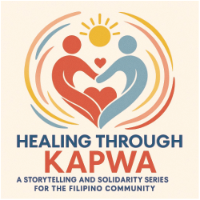August 1, 2025 — You won’t believe how empty Vancouver was in the early 1960s.
My first contact with the Asian community was with the Philippine Consulate since the Consul-General’s children, Rosie, Paco, and Cora Oira, were also UBC students. Francisco O. Oira was the first Consul General (1962-1968). The upgraded Consulate had only been around for two years (the foreign service post was established in 1956) and the number of Filipinos could be counted on one’s fingers.
I hung out at their house on Ash and Cambie near Shaughnessy. Mrs. Oira would sit on a high stool as she stirred the adobo on the stove while we waited for Consul Oira to get home. He would be very tired, so she would caution me not to talk too much. But, tired as he was, he would be very amiable and kind. He offered to sell me their house for thirty-two thousand dollars and I thought, why would I live in this hick town? Having been raised in cosmopolitan Manila and landing in San Francisco, I found Vancouver to be slow. The locals called it Lotus-Land with its laid-back attitude that bordered on apathy.
The possible fun-places---yoga, martial arts, gym---on Granville had sleazy exteriors so I was afraid to go in. This was all before Arthur Erickson designed buildings which modernized the city. Culture was imported from Europe, America and local orchestras at the QE Theatre. Downtown was so empty you could hear your heels on the pavement. There were homeless, drunken men around Victory Square but not as many homeless as Vancouver has now. Main and Hastings palpated with lost souls.
In 1963, a year before I arrived, my older sister, Muriel, entered Canada to teach Grade 3 at St. Joseph's in the B.C. Interior. Nelson. She had over thirty-five pupils, an improvement from the sixty boys she had at the Ateneo Grade School in Quezon City. Our parents made her come to Vancouver while I was studying. She taught in North Vancouver at Holy Trinity and commuted from our place on Victoria Drive and East 32nd Avenue. 2020 East 32nd Avenue.
We bought a rust-orange Fiat from a used car dealership on Kingsway for five hundred dollars that was probably worth fifty dollars, jacked up by the sleazy salesman when he saw two patsies coming, because it turned out to be a lemon when it fell apart on the highway to Seattle. Had to have it towed back and scrapped for parts.
So, my sister ended up being picked up by a co-teacher to get to work while I took two buses to get to UBC. It took two hours. Sometimes longer when I couldn’t get on the bus on Blanca Loop because I wasn’t aggressive enough to elbow my way on with all the other students trying to get to classes on time. Blanca Loop. In the rain. Sopping wet.
This was the academic year, 1964-1965. I wrote poems like crazy for nine months about Vancouver, poems that popped into my head while I was on the buses. One, in particular, I liked was when I glanced at a restaurant on Granville through the wet glass, a restaurant called The Black Cat, and I 'saw' a black cat on a thin fence and the imagination walked on from that. Strange how external objects click, open doors of perception. But poetry is grounded on reality.
When Muriel got married in Seattle in 1966, Mr. Oira was the ninong sa kasal, co-sponsor with Estela Romualdez Sulit, who was the diplomatic Minister there before her assignment as Ambassador to Portugal. Estela was our oldest sister Evelyn’s mother-in-law. Our parents brought all the wedding gowns and accessories from the Philippines.
Such fluid borders then. A true North America.



